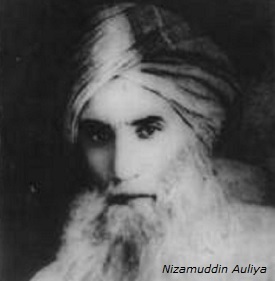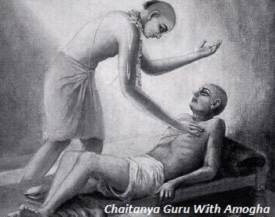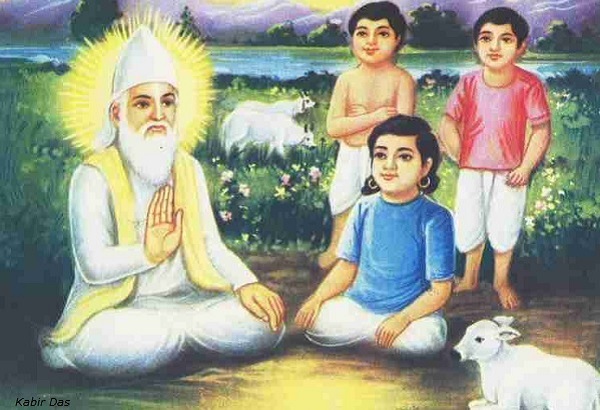
- Medieval Indian History Tutorial
- Medieval Indian History - Home
- Kingdoms of North India
- The Rajputs
- The Invaders
- Delhi Sultanate
- The Khilji Sultans
- Tughlaq Sultans
- Lodi Sultans
- New Kingdoms
- Religion
- The Sikh Movement
- Babur’s Advent into India
- Major Battles
- Significance of Babur's Conquest
- Humayun’s Conquest
- Humayun’s Downfall
- Sur Empire
- Akbar the Great
- Early Phase of Akbar’s Reign
- Expansion of Mughal Empire
- Akbar’s Administrative System
- Akbar’s Organization of Government
- Akbar’s Relation with Neighbours
- Rebels during Mughal Empire
- Deccan & South India
- Conquest of South – I
- Conquest of South – II
- Deccan’s Cultural Contribution
- Political Development Mughals
- Nur Jahan
- Shah Jahan’s Rebel
- Mughals’ Foreign Policy
- Mansabdari System
- Social Life under the Mughals
- Nobles & Zamindars
- Trade & Commerce
- Mughals’ Cultural Developments
- Language, Literature & Music
- Religious Ideas & Beliefs
- Problems of Succession
- Aurangzeb’s Reign & Religious Policy
- North-East India
- Popular Revolts & Movements
- Rise of Maratha
- Administrative System of Shivaji
- Aurangzeb & Deccani States
- Reference and Disclaimer
Medieval Indian History - Religion
After the arrival of Islam in India, some changes can be seen in religious practice as well. Religious ideas (especially Hindu and Muslim religions) were exchanged. However, in context of religious trends, the following two movements are the most noticeable −
Sufi Movement and
Bhakti Movement
Sufi Movement
During the eleventh century, some of the Muslims (especially who had come from Persia and nearby regions) were fundamentally Sufis. They settled in different parts of India and soon gathered plenty of Indian followers.
The Sufi ideology promoted love and devotion as means of coming nearer to God. The true God’s devotees bound to came close (both) to God and to one's fellow men. Secondly, Sufis suggested that prayers, fasts, and rituals were not as important as the true love of God.
The Sufis, as they were promoting true love to God and fellow men, they were pretty flexible and tolerant for all other religions and sects, and advocated that the paths to God can be many.
The Sufis, further, promoted respect for all human beings. This was the reason that the orthodox Ulema did not approve of the ideology of Sufis and said that Sufi teachings were not in agreement with orthodox Islam.
Many of the Hindus also respected the Sufi saints and became followers. However, the Sufis did not attempt to deceive or convert Hindus to Islam, but rather advised Hindus to be better Hindus by loving the one true God.
One of the most popular Sufi saints was Muin-ud-din Chishti. He lived most of his life in the city of Ajmer (where he died in 1236).
Muin-ud-din Chishti emphasized on the devotional music and said that the devotional music is one of the ways to go closer to the God.
The Ulema did not approve of linking music with religion or God. However, Chishti's followers held gatherings at the places where some of the finest music could be heard.

The qawwali was a familiar form of singing at the sufi gatherings. Some songs sung in Hindi were also popular.
Baba Farid who lived at Ajodhan (now in Pakistan) was also a popular Sufi saint.
Nizam-ud-din Auliya was the Sufi saint who was loved by both the Sultans and by the public. His center was in the neighborhood of Delhi.
Nizam-ud-din Auliya was a brave and honest man and he advocated with his free mind. If Nizam-ud-din Auliya did not like any action of even the Sultan, he said so and was not afraid as were so many other people.
The Bhakti Movement
During the seventh century, Bhakti movement evolved in the south part of the country (especially in the Tamil speaking regions). Over a period of time, it spread in all the directions.
The alvars and the nayannars of the Tamil devotional cult had started the tradition of preaching the idea of bhakti through hymns and stories.
Most of the saints of Bhakti movement were from the non-Brahman families.
Like Sufi ideology, the bhakti ideology also taught that the relationship between man and God was based on love, and worshipping God with devotion was better than merely performing any number of religious ceremonies. Bhakti Saints emphasized on the tolerance among men and religions.

Chaitanya, the devotee of Krishna, was a religious teacher who preached in Bengal. He composed many hymns dedicated to Krishna.
Chaitanya had traveled different parts of the country and gathered a group of his followers. At the end of his life, he settled at Puri in Orissa.
In Maharashtra, the Bhakti ideology was preached by Jnaneshvara. Jnaneshvara had translated Gita in Marathi.
Namadeva and in a later period, Tukaram, were the pretty popular saints of Bhakti movement.
Kabir, who was basically a weaver, was also a Bhakti saint (in Banaras). The dohas (or couplets), which Kabir composed and preached to his followers are still recited.

Kabir realized that religious differences do not matter, for what really matters is that everyone should love God. God has many names (e.g. Ram, Rahim, etc.). Therefore, he tried to make a bridge between the two religions, namely Hinduism and Islam.
The followers of Kabir had formed a separate group, popular as Kabirpanthis. Later, Surdas and Dadu continued the bhakti tradition.